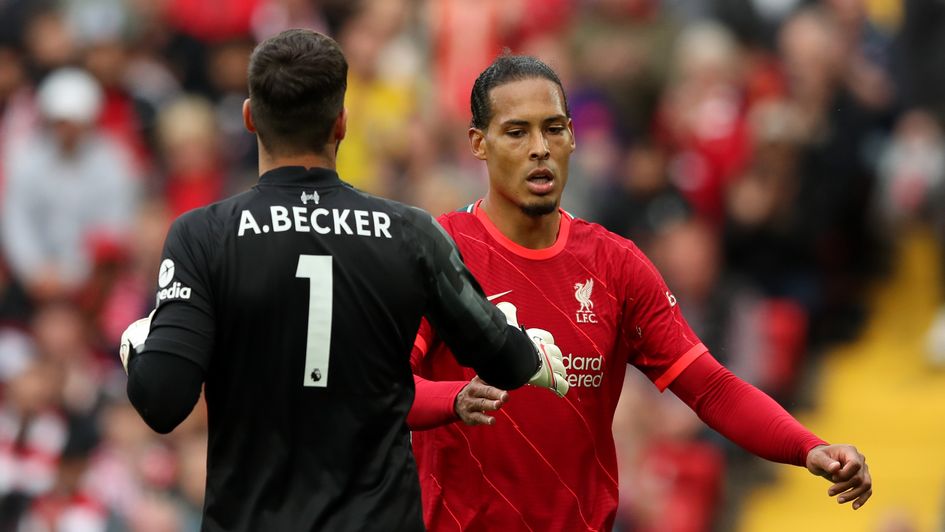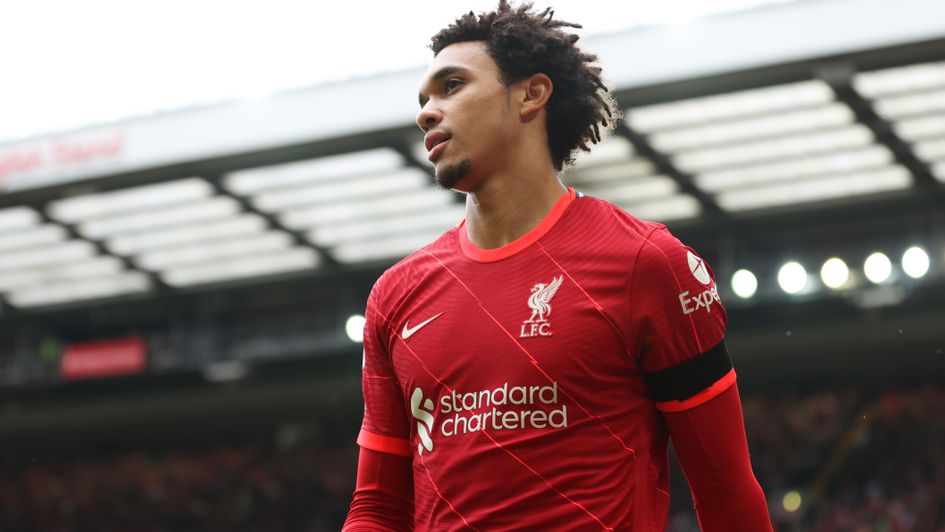 Fast Results
Fast Results Scores
Scores
Liverpool: Virgil van Dijk and Alisson to blame for poor defence?
It feels like only yesterday Liverpool were riding high at the top of the Premier League and seemingly back to their cold, ruthless best.
But all of a sudden, with a run of just two wins in their last five league games, Jurgen Klopp’s side are on the verge of falling into a mini-crisis of sorts.
Lose to Arsenal on Saturday and Mikel Arteta’s team will jump above them in the table, knocking Liverpool out of the top four and setting off alarm bells at Anfield.
It’s obvious where the problem lies.
Liverpool have conceded 13 goals in the last nine games across the Premier League and Champions League, a sequence that started with a 3-3 draw at Brentford and, most recently, saw West Ham United win 3-2 at the London Stadium.

And while Mohamed Salah’s extraordinary run might be papering over the cracks for now, Liverpool simply will not challenge for the title unless their defensive issues are ironed out.
Why are Liverpool conceding so many goals?
Interestingly, from a statistical perspective Liverpool don’t appear to be doing anything particularly different to the 2020/21 or 2019/20 seasons.
All of their defensive metrics are consistent and point to a team with a very solid foundation, with Liverpool having conceded the third-fewest shots on goal in the Premier League this season (8.2 per game). Yet they are actually over-performing their xGA of 13.4.
What that tells us is that Liverpool’s issues are not about tactical structure but individual errors and tiny moments of indecision or openness. That is the inevitable risk with such an adventurous, high-line system like Klopp’s.
Anything less than perfection, particularly in the defensive transition, and the complex configuration suddenly unravels.
Liverpool miss Georginio Wijnaldum
It only takes a minor tweak to the system, a grain of sand in the computer chip, for things to fall apart.
The loss of Georginio Wijnaldum may explain everything.
Wijnaldum played in every Premier League game last season, starting in 34 of them, and missed just one match (starting 35) in their title-winning year of 2019/20, featuring predominantly from the left-centre of midfield.
Brilliant at holding onto the ball in tight areas and playing clean, simple passes, his metronomic presence was vital to ensuring Liverpool could recycle possession.

In other words, he was the crucial component to managing games; taking the sting out when Liverpool went a goal up.
Already this season, Liverpool were 2-0 up against Brighton only to draw; twice led at Brentford but drew 3-3; twice led against Manchester City but dropped two points; and let a two-goal lead against Atletico Madrid slip, only to grab a late winner.
In each of these matches Klopp was unable to control the game state, most likely because he missed the quietly magnificent Wijnaldum.
And the Dutchman’s influence on Liverpool’s defensive record goes even deeper.
Analysing all the goals Liverpool have conceded since the Brentford game in late September, four of the 13 can be traced to small positional errors from Curtis Jones or Alex Oxlade-Chamberlain – filling in for Wijnaldum in the left-centre of midfield.
Often Jones’ or Oxlade-Chamberlain’s errors are standing a few yards out of position, pressing ahead of their midfield partners when they shouldn’t and in doing so allowing the opposition to race through the middle of the pitch in the transition.
That’s what happened in the build-up to Pablo Fornals’ goal a fortnight ago, as well as twice against Brighton and for Man City’s first goal at Anfield.
One prominent part of this issue is an increasing difficulty defending the wide areas from within their narrow 4-3-3, which again comes down to the tactical awareness, energy, and experience Liverpool are lacking without Wijnaldum.
Man City repeatedly used diagonal switches to create chances, while it is telling that against Brighton, with Liverpool 2-1 up, Klopp moved to a flat 4-4-2 formation: “We changed system (in the) second half at a specific point,” he said.
“We couldn’t defend the width anymore."
Van Dijk and Alisson out of form
The second biggest reason for Liverpool’s defensive problems is Virgil van Dijk, whose speedy return from an ACL injury has perhaps left him short on match fitness.
He doesn’t look as sharp in anticipation or acceleration, and it has become a growing trend this season to see him spin around on the spot in the transition, unable to keep up with the speed of the game.
This was most notable in goals conceded against Brentford and Atletico – and it is backed up by the numbers.
According to Smarterscout’s ratings, which are calculated using data and analytics, Van Dijk’s performance levels have dropped significantly compared to the 2019/20 season.
His ‘recovering a moving ball’ is down from 97 to 77; his aerial duels are down from 77 to 53; and his defensive quality (a measure of the contributions to xGA conceded per defending opportunity) is down from 85 to just 8.
We know from Liverpool’s problems through 2020/21 that missing a peak Van Dijk badly affects them, and the issue is exacerbated as errors creep into Alisson Becker’s game.
Set-piece struggles
He was arguably at fault for all three of West Ham’s goals, which is perhaps related to Liverpool’s emerging inability to defend set-pieces. Four of the 13 goals conceded since Brentford have been from set-pieces.
When you add all this together, it gives the impression of a side too vulnerable to defend against counter-attacks, with an over-stretched central midfield offering too little protection to the back four.
Space opens, possession is given away, and things start to look an awful lot like last season.

The good news for Liverpool supporters is that, as ever, minor tweaks can fix things.
Klopp’s tactics always look chaotic and clumsy until things click into gear – hence those anxious first couple of years at Borussia Dortmund and Anfield, before both teams exploded into life – and arguably all he needs to do is wait for Van Dijk’s fitness to improve while settling on the left-central midfielder.
There has been too much chopping and changing in the middle so far.
Frankly, neither Jones nor Oxlade-Chamberlain seem reliable enough, and should injuries clear up Liverpool ought to consistently start Fabinho, Jordan Henderson, and Naby Keita in midfield.
That, surely, is the best way to rediscover their ability to control matches; to shut games down and grind their opponents into submission.


